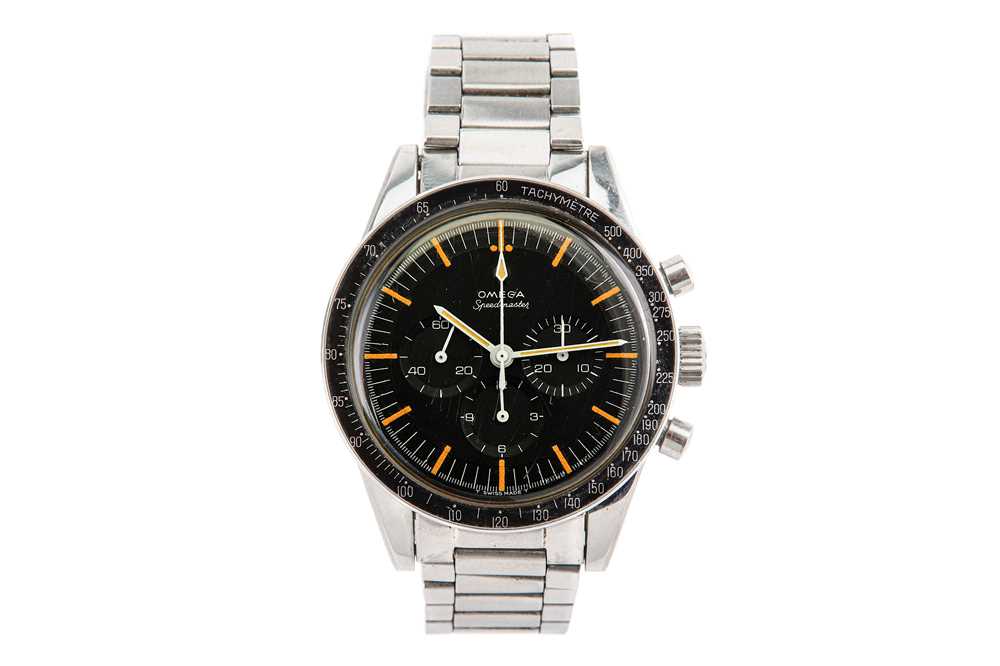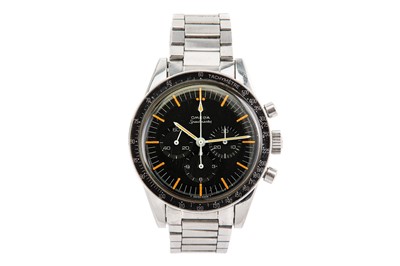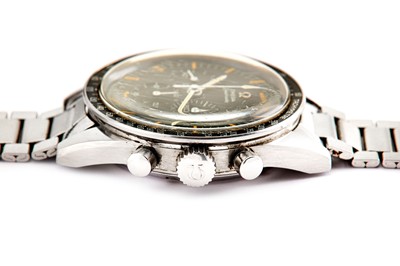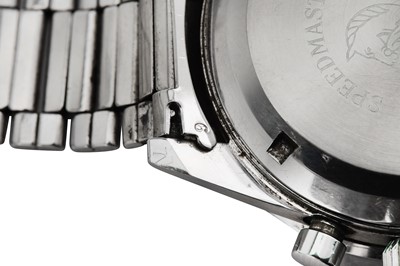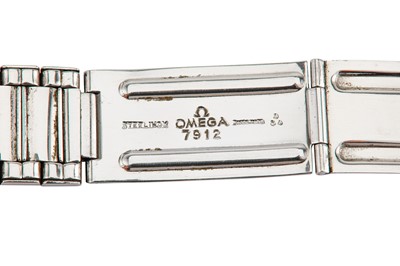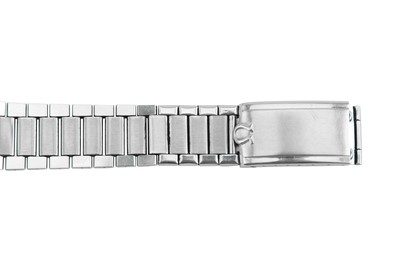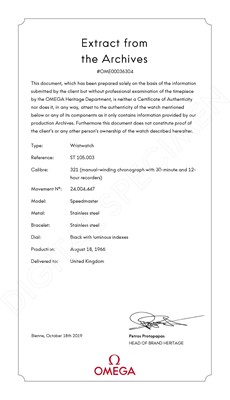14th Nov, 2019 10:00
Watches
OMEGA. A VERY FINE AND RARE MEN'S MANUAL STAINLESS STEEL WRISTWATCH "ED WHITE" Model: Speedmaster Date: 18th August 1966 Case reference: ST 105 003-65 Movement: Signed, 17-Jewels, Cal.321, No. 24'004'447 Dial: Signed, black, applied luminous batons, white outer minute division, white sword hands with luminous insert, centre seconds hand for chronograph with luminous insert, subsidiary dial for minute chronograph at the 3 o'clock position, subsidiary dial for hour chronograph at the 6 o'clock position, subsidiary dial for seconds at the 9 o'clock position, "T SIWSS MADE T" at the 6 o'clock position Case: Signed, brushed and polished stainless steel, straight lugs (last model produced with straight lugs), an extremely rare DON black bezel with silvered Tachymetre, screw down back with engraved seahorse logo, Speedmaster and Omega inscription Bracelet: Signed, brushed and polished stainless steel No.6, signed brushed and polished deployment clasp No. 7912 Size: 40mm Accompaniments: Extract from Omega Archives Same model sold at Sotheby's, 19th July, Lot 43 without bracelet, for 12,500 USD The extremely rare reference 105.003 was produce between 1964 and 1969. Ed White became the first America to walk in the space as part of NASA's Gemini 4 mission wearing on his wrist the first watch in history to be officially certified and selected by NASA for its crews members and for EVA (extravehicular activity),being tested during Gemini missions and used by astronauts as Frank Borman, "Gordo" Cooper, Tom Stafford but the first ones that wore the famous Omega Speedmaster were Guss Grissom and John Young strapped to the outside of the sleeve of his G4C space suit. During the 1960's, different brands proved to be qualified for space flights. Among them, there were Breitling, Rolex, Omega, Longines, and many more. Even Hamilton submitted a pocket watch but at the end, just three brands (Rolex, Omega and Longines-Wittnauer), all with mechanical hand-wound models, proved to be the successful candidates to go through the extreme conditions and tests for space flights, as follows: -High temperature: 48 hours at 160 °F (71 °C) followed by 30 minutes at 200 °F (93 °C) -Low temperature: Four hours at 0 °F (−18 °C) -Temperature cycling in near-vacuum: Fifteen cycles of heating to 160 °F (71 °C) for 45 minutes, followed by cooling to 0 °F (−18 °C) for 45 minutes at 10−6 atm -Humidity: 250 hours at temperatures between 68 °F (20 °C) and 160 °F (71 °C) at relative humidity of 95% -Oxygen environment: 100% oxygen at 0.35 atm and 71 °C for 48 hours -Shock: Six 11 ms 40 g shocks from different directions -Linear acceleration: from 1 to 7.25 g within 333 seconds -Low pressure: 90 minutes at 10−6 atm at 160 °F (71 °C), followed by 30 minutes at 200 °F (93 °C) -High pressure: 1.6 atm for one hour -Vibration: three cycles of 30 minutes vibration varying from 5 to 2000 Hz with minimum 8.8 g impulse -Acoustic noise: 30 minutes at 130 dB from 40 to 10,000 Hz After all those extreme tests, in March 1965, the watch that prevailed was the Omega Speedmaster, which performed the best results with just a variation of 5 seconds per day rate. Nowadays the Omega Speedmaster is one of the few watches qualified by NASA for spaceflight and is still the only one qualified for EVA (extravehicular activity).
Sold for £13,000
Includes Buyer's Premium
Do you have an item similar to the item above? If so please click the link below to submit a free online valuation request through our website.
